 The clock strikes trouble in Dick Powell crime thriller. 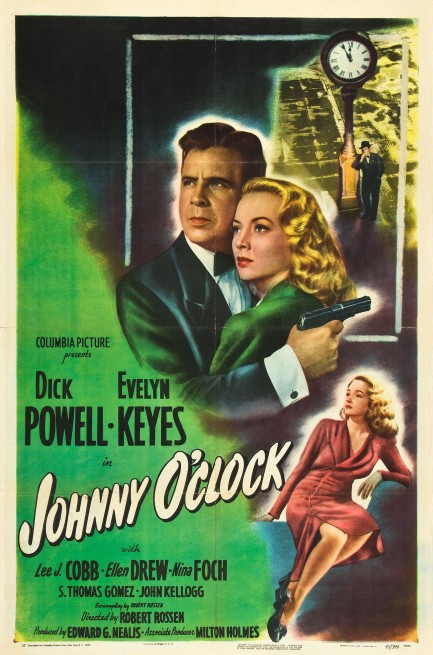
Above is a beautiful poster for the vintage film noir Johnny O'Clock, which starred Dick Powell at the height of his fame, and was probably greenlighted due only to his presence. The plot and script could be better, but Powell and his co-stars Evelyn Keyes, Thomas Gomez, Ellen Drew, and Nina Foch are all excellent, and the result is a twisty little noir that starts with power games inside a casino operation, but evolves into the suicide of a casino hatcheck girl, and an investigation by a cop working from a mistaken set of assumptions. Keyes plays the showgirl sister of the unfortunate suicide who jets into town, her arrival nudging casino manager Powell from indifference to curiosity about the death. Not that Powell has much of a choice in the end—the cops become extremely interested in him when the suicide turns out to be murder, his main rival turns up dead, and he's suspected of both crimes.
So the movie eventually falls into the familiar pattern—Powell needs to uncover the truth even as the cops are trying to put him behind bars; Keyes has the hots for a gangster though she's presumably old enough and smart enough to know better; Powell has gotten along fine without a conscience for years, but now Keyes is pressuring him to make the right choices; and finally there's that old film noir obstacle jealousy, ultimately the deciding factor in so much. But familiar as these ingredients may be, Johnny O'Clock manages to mix them into a decent movie. It isn't the best from the film noir cycle, but it's worth the time to watch it. As a side note, you know those old cartoons where a gangster flips a coin over and over, flipping it and catching it with the same hand? This is probably the movie where it originated. Powell is a master with that coin. And he's a master of film noir too. Johnny O'Clock premiered today in 1947. 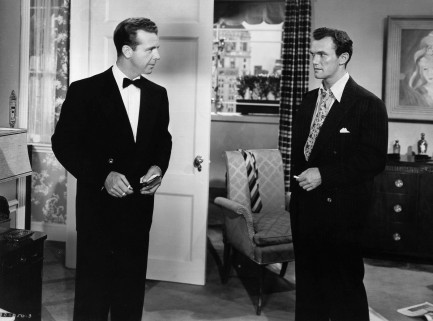 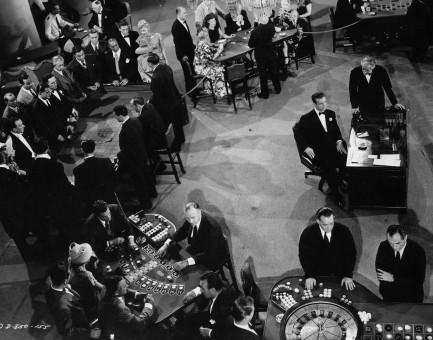  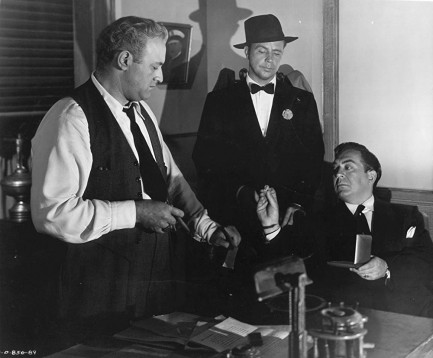 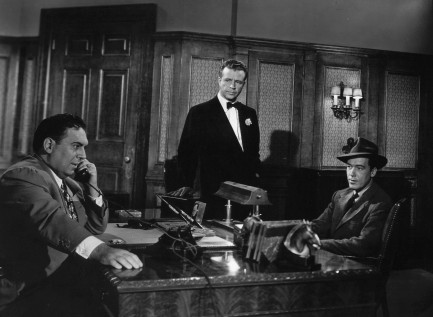 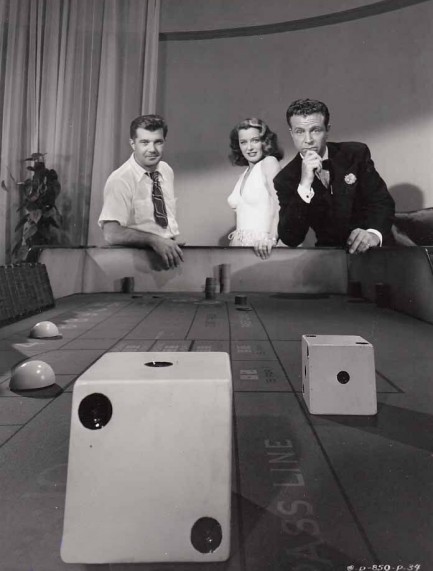 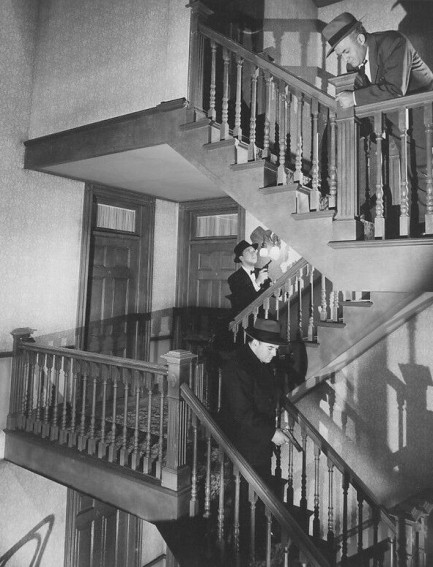  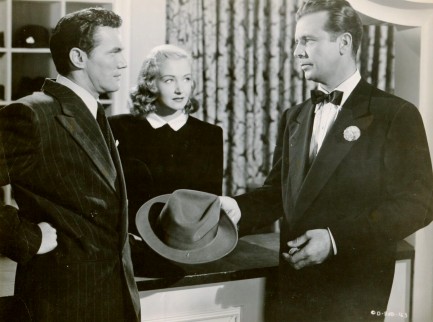 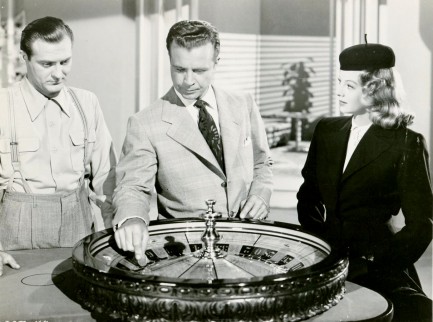 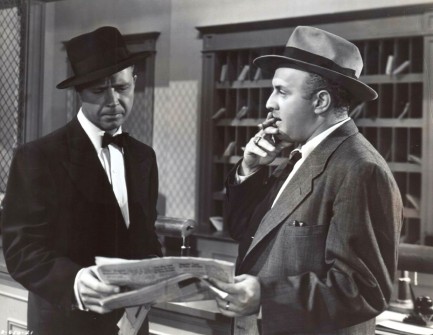 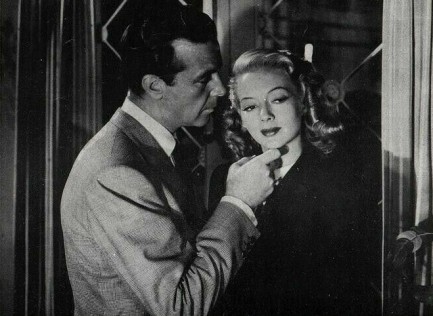 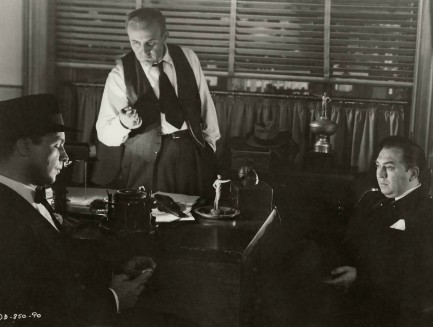 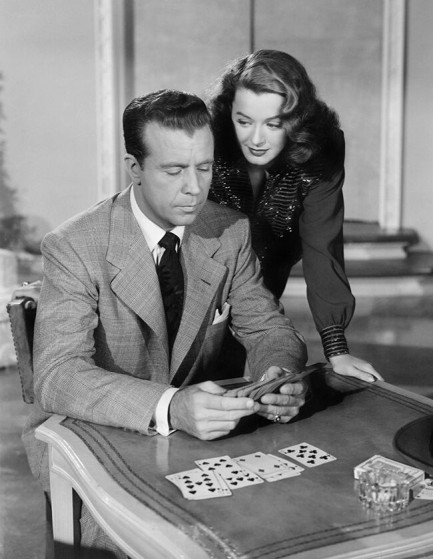 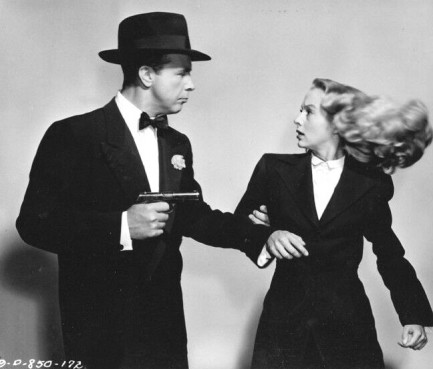 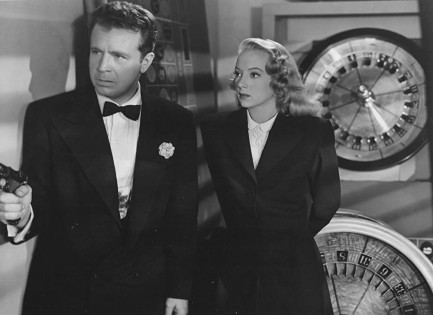 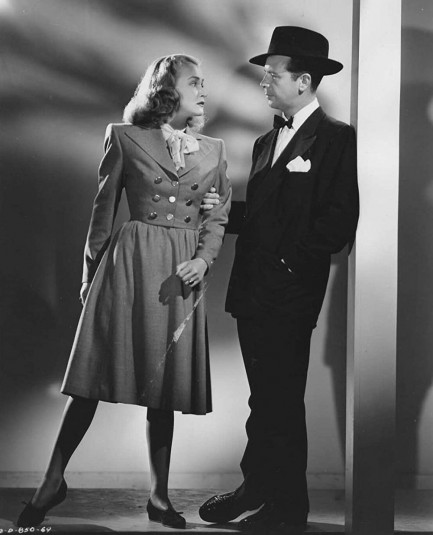 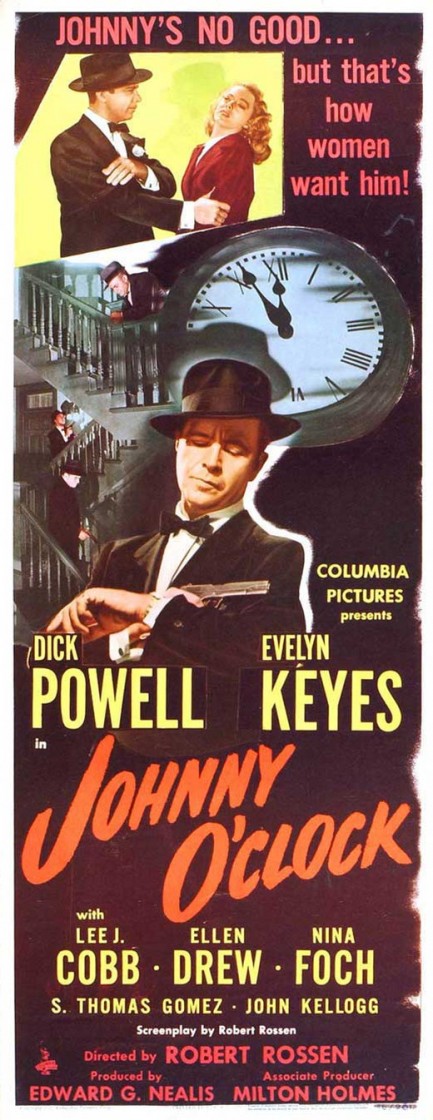
 If she were architecture she'd be streamline moderne. 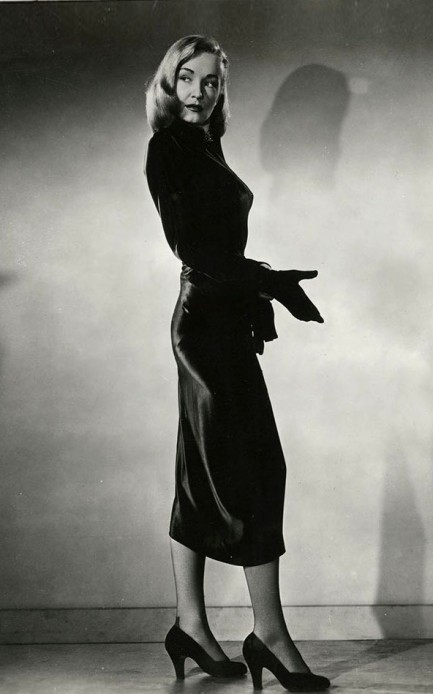
Above, a Columbia Pictures promo image of Dutch actress Nina Foch made for her 1949 drama Johnny Allegro. She looks like she's getting her gloves on for some shady activity or other, which fits, since in the movie she plays a woman with a very mysterious background. We may revisit the subject later. In the meantime you can see another Foch photo here.
 For Foch's sake won't someone please listen? 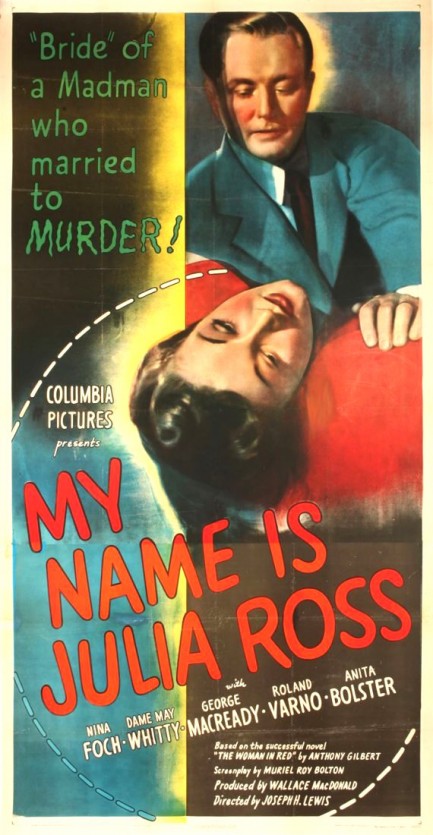
This poster was made to promote My Name Is Julia Ross, a tidy little film noir only sixty-five minutes in length, which makes it an economical expenditure of time. Dutch beauty Nina Foch is hired to be a live-in secretary but finds herself stuck in a house where everyone seems to think she's someone she isn't. She has a husband, a doting mother-in-law, and other people in her life, none of whom she's ever met before. What sort of plot is afoot here? Well, we quickly learn Foch was chosen to be an unwilling double for the former mistress of the house, who's dead, murdered by her husband actually—a fact unknown to the proper authorities. You can probably figure out the rest. Just think: inheritance. Realizing she's being set up to be murdered, she tries to tell everyone from the police to her doctor she's not the dead wife, but nobody will listen. Is everyone blind to the truth? Or is it that everyone is in on the plot? Either way she better figure out something quick. My Name Is Julia Ross isn't a perfect movie, but it's pretty good, and since it's barely longer than a television show we have to recommend it. It premiered in the U.S. today in 1945.
 Thou shalt not mispronounce her name. 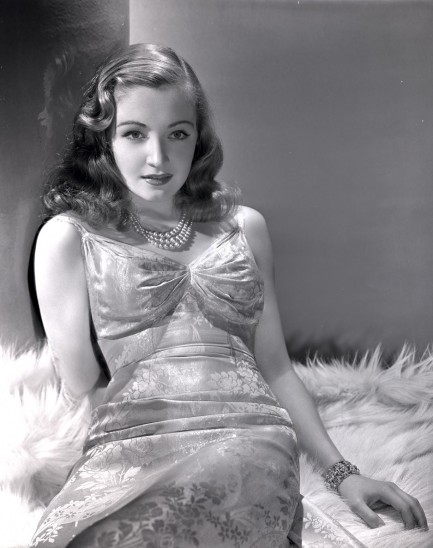
When your name is Nina Foch you probably get used to introducing yourself only to have people say, “You need a what?” Not us, though. We’d never be that juvenile. Film buffs will remember this Dutch actress as Bithiah, the woman who in 1956’s oft-broadcast spectacle The Ten Commandments finds Moses and raises him as her son, but she also played in pulpier fare such as The Return of the Vampire and Escape in the Fog, and important noirs like Johnny O’Clock and My Name Is Julia Ross. This shot was made in 1944 as a promo for her role in Cry of the Werewolf.
|
 |

The headlines that mattered yesteryear.
2003—Hope Dies
Film legend Bob Hope dies of pneumonia two months after celebrating his 100th birthday. 1945—Churchill Given the Sack
In spite of admiring Winston Churchill as a great wartime leader, Britons elect
Clement Attlee the nation's new prime minister in a sweeping victory for the Labour Party over the Conservatives. 1952—Evita Peron Dies
Eva Duarte de Peron, aka Evita, wife of the president of the Argentine Republic, dies from cancer at age 33. Evita had brought the working classes into a position of political power never witnessed before, but was hated by the nation's powerful military class. She is lain to rest in Milan, Italy in a secret grave under a nun's name, but is eventually returned to Argentina for reburial beside her husband in 1974. 1943—Mussolini Calls It Quits
Italian dictator Benito Mussolini steps down as head of the armed forces and the government. It soon becomes clear that Il Duce did not relinquish power voluntarily, but was forced to resign after former Fascist colleagues turned against him. He is later installed by Germany as leader of the Italian Social Republic in the north of the country, but is killed by partisans in 1945.
|

|
|

It's easy. We have an uploader that makes it a snap. Use it to submit your art, text, header, and subhead. Your post can be funny, serious, or anything in between, as long as it's vintage pulp. You'll get a byline and experience the fleeting pride of free authorship. We'll edit your post for typos, but the rest is up to you. Click here to give us your best shot.

|
|






























































































